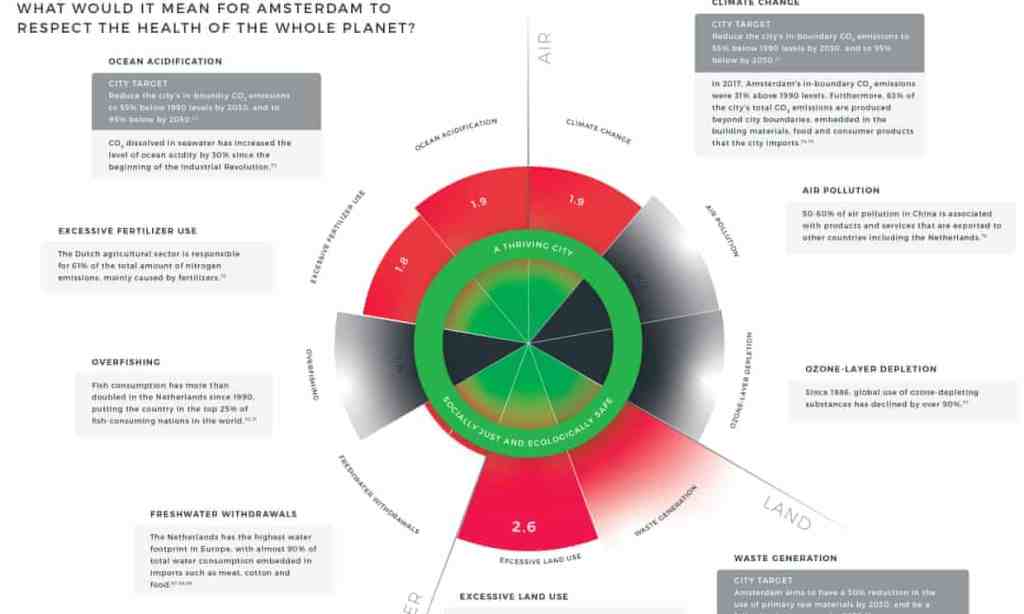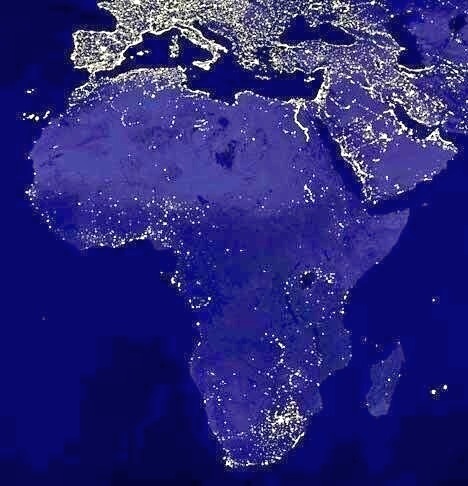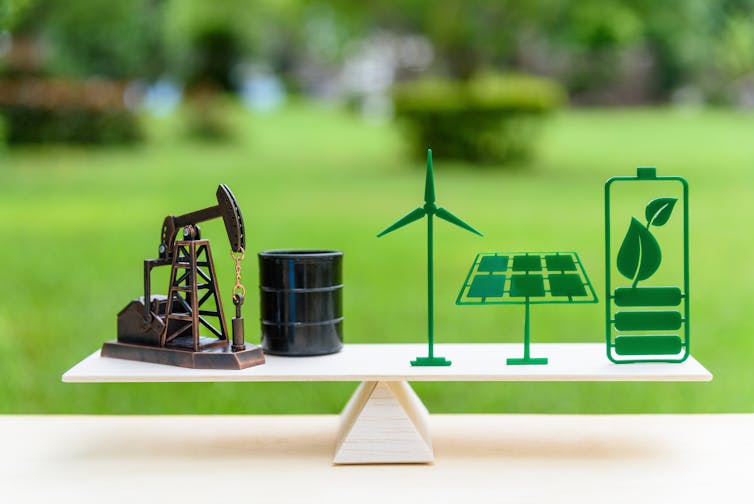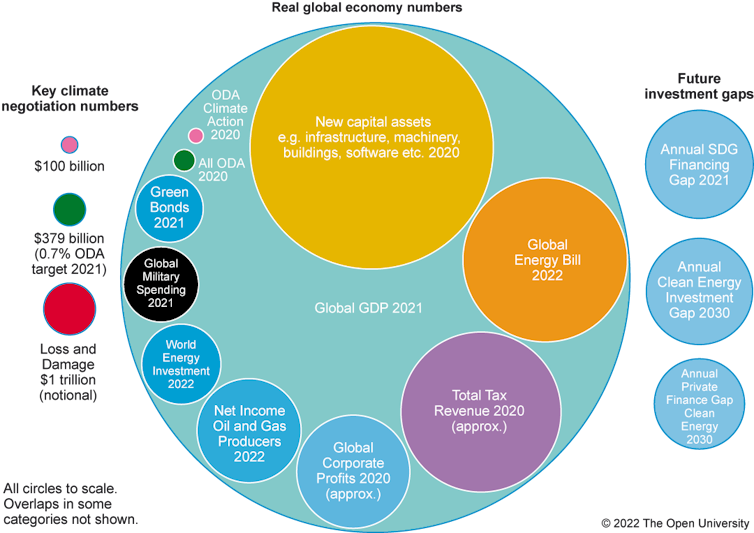Dubai flooding: Dramatic photos after UAE sees heaviest rainfall in 75 years
Well, folks, you better get used to it.
Money can’t buy the weather. (Although I’m sure some opportunistic entrepreneurs are pitching it.)
Ok, climate deniers, this is what global warming looks like. And it’s likely to start occurring more regularly. From the perspective of a glider pilot, and amateur climatologist, the picture is more clear. Warm air rises till it condenses into clouds. That then unloads unimaginable torrents of rain.
And there you have it.
The sea level is not just rising, the oceans are warming. And that warming causes it to evaporate more quickly and saturate the sky quicker than the air can hold the water. And there you have the recipe for thunderclouds. Big, tall ones that appear to be drenching the right people.
Source: Dubai flooding: Dramatic photos after UAE sees heaviest rainfall in 75 years
I’m a bit tired of the ignorance-based questions being asked on Quora, but I can’t and don’t fault media-based ignorance. But,if I don’t illuminate Fundamental Truths, How will people learn.
Quora? Are there any alternative solutions that could have been considered instead of building a gas-fired backup power plant?
NO!
And that answer is provided by my 35 years in the gas and alternative energy businesses.
Having started Alternative Resource Company in 1986, I’ve examined this space deeply. The company name was shortened to Altresco, which designed the complex business model required to accomplish that goal.
The detailed business structure and formulas for “orchestration” of the 24 stakeholders in a way that stayed sustainably and transparently beneficial to all parties. (However, it’s stayed mysterious to all but Altresco and me since.)
But we also had to develop a natural gas-fired cogeneration facility that did yield the emission-free waste heat we used to replace all combustion of dirty oil at the industrial.
But to clear the skies for a much bigger area, we had to open the natural gas gate from Canada, which shipped us enough otherwise wasted (flared) gas to replace all oil burning in the region.
The bottom line of this message is that natural gas is the only fuel that we could use to provide both reliable emissions-free heat to the industrial and electricity generation to the grid was to use the newly available natural gas.
By substituting emissions-free heat to replace the 200,000 BBls of dirty ship oil the giant industrial complex had been burning for 45 years. The skies of Western Massachusetts became very clear blue.
By 2007, all of the clean natural gas in North America had nearly been used up. Only fracking has kept ample natural gas supplies available, and we need to be grateful that we can generate reliable natural gas electricity.
Getting back to the question. The only way to provide affordable and reliable electricity for the last four decades has been using the cleanest coal generators and nuclear energy whenever possible.
However, neither coal nor nuclear-generating plants are flexible enough to work with intermittent renewable electricity. The only option for retaining reliability while integrating growing renewable electricity has been to find equipment that can ramp up and down quickly.
The only equipment that can provide that flexible reliability is gas-fired generation.
And, before 2007, there was not enough gas in the US to fill the gaps left by retiring coal or nuclear plants.
So, the newly available natural gas is needed to maintain grid reliability without the hulking coal and nuclear plants is natural gas-fired generation. We are fortunate in North America to have the massive new natural gas supplies that fracking provides.
Fundamental Facts about Fracking
It’s time for the truth about fracking. The communities in the areas of fracking are the best and most modern they’ve ever been.
Fracking is the most environmentally beneficial approach ever used to extract oil and clean natural gas. It’s also bringing new prosperity to the communities in the area.
Politicians leveraging “Fracking fears” are demonstrably corrupt and or ignorant about the realities of fracking. It is an example of politics based on weak, inaccurate, but highly promoted mythology.
And, regarding the “fracking advocacies:” This is just one more example of how organizations are just cashing in on the terrifying myths they’ve created to gain donations and other money from well-intended but ignorant patrons.
The reality is that the people located in fracking areas are being far better served and prosperous than they’ve been for decades.
The anti-fracking opponents are utterly ignorant of how and why fracking is such an improvement over the “traditional” carelessly drilled wells that are now abandoned and leaking contamination into the aquifers they drilled through.
The fundamental truth is that the Gaslands movie should have been labeled as the fiction it tells.
The fear-inducing movie presented as an anti-fracking documentary movie, “Gaslands,” was produced to help build irrational fears of “fracking” impacts and depicted the Town of Barnhart as a fracking-caused ghost town.
In reality, Barnhart, TX, today is the finest it’s ever been. Barnhart has experienced several booms and bust cycles, the 1910-2010 agriculture period preceding the movie shot, with the last dooming cycle being related to the human-induced water scarcity from over-pumping the freshwater aquifers in the area for agricultural irrigation.
The advent of fracking brought new modern life to this west Texas town and brought new prosperity to the town and areas surrounding it.
In reality, today’s Barnhart is a success story about how positive the fracking economy is. Rather than obliterated by fracking, it’s become the finest, most modern town it’s ever been with new growth. It’s even listed in Travel Advisor as an interesting and peaceful place to visit.
Top energy news: Wind and solar hit record levels of power generation; and more | World Economic Forum

Subscribe to continue reading
Subscribe to get access to the rest of this post and other subscriber-only content.
Queued Up: Characteristics of Power Plants Seeking Transmission Interconnection | Electricity Markets and Policy Group
For my friends that I’ve discussed some alternative options with, this verifies my position that the amount of superfluous intermittent electricity generation is limitless.
This talk explains why I’ve not been able to explain my thinking to audiences who want to understand.
Over the past 35 years, I’ve brought together several independent power generation businesses in situations considered “impossible.”This talk is humbling and gratifying at the same time. I’ve only been able to say, “We just think differently.”
My thinking has always been oriented toward orchestrating businesses to last at least 20 years or longer. This has made them complex beyond any single stakeholder’s imagination.
Yet, as we start “seeing” each entity, the complexity can be broken down into simple and transparent relationships that all parties can see are in their best interest to maintain and honor their participation enabling agreements.
The occasional saving grace is the side that has what Simon calls infinite thinking and has enough empathy to recognize the other side’s seemingly inexplicable and scripted behavior is based on the truth as they’ve been taught to perceive it.
No matter how much I’ve experienced and learned, I’ll never be a “master”and will always appreciate teachers that reframe my perspectives so I can better understand the “Why” of nearly every situation.
NY Times Names Pittsfield, MA as Top 10 City People Moved To
From Altresco’s perspective, all business is designed to create benefits that last a minimum of 20 years.
We developed the Altresco Pittsfield business on that basis. In 1990 we started providing emissions-free heat to the GE Pittsfield Complex, replacing the annual combustion of 200,000 Bbls of the same kind of high pollution Bunker C fuel causing the Covid precursor pollution throughout the industrial world.
The Pittsfield Generation business was not a typical “power Plant” development as has been the standard for the past 20 years.
The Altresco Business system was thoughtfully and collaboratively designed, resulting from transparent collaboration with New England Electric Systems, the six pipeline companies bridging the 2400 miles between the Alberta, Canada, gas producers, and our “co-generating” station, with particular dedication and collaboration between Tenneco Gas Transmission and NEES, the Massachusetts department of environmental quality, DEQE. , and 14 additional participants that allowed the Altresco Pittsfield Facility to operate as a complete utility, nestled under the wing of New England Electric, interconnected to and dispatched by NEPOOL (now NEISO)
Although a “Qualifying Facility” under the PURPA regulation, the “Power Purchase Agreement” with NEES was meticulously crafted to provide much more significant benefit to the 14 individual “stakeholders” than either a “power plant” style development or even New England Electric System themselves could have accomplished alone.
I will soon be posting an acknowledgment thanking and recognizing the 57 Individuals that were members of what turned into a team that was all wholly dedicated to bringing this facility and the peripheral benefits to Upstate Eastern New York and Western Massachusetts.
Source: NY Times Names Pittsfield, MA as Top 10 City People Moved To
MISO approves 2000 miles of new transmission
My question is: How will this transmission improvement improve the “Stranded Power” uptake and reduce curtailments of the growing amount of wind generation in MISO. Is this expansion designed to encourage and incentivize energy storage and other DERs?
Leading Developers Through the Local Government Approval Process – Burns, Figa & Will
This wonderfully clear article written by Attorney Candace Figa is as sound an explanation of the nuances of “project development” as I’ve ever read. Leading Developers Through the Local Government Approval Process – Burns, Figa & Will
I’m also posting this today, on her late husband’s birthday. And in Memoriam of the Honorable Phillip S. Figa, who was the single most impactful man in my professional life, and in every success, Altresco was able to achieve during the 1986-1999 era.
I will always do my best to uphold the values Phil, and the law firm of Burns Figa and Will brought to every transaction and situation globally.
Here are the countries that import the most Russian oil | TheHill
The gift of Ukraine’s solidarity, along with the global support to stop Putin’s aggression is creating a potential win for all of humanity as it’s forcing rapid shifts away from the Russian fossil fuel that’s a huge part of the global carbon emissions.
Russia is irreparably breaching and dissolving the world’s trust as a reliable fuel supplier.
And, an unintended but globally beneficial outcome is a greater carbon emissions reduction TODAY, than the COP26 targets could bring about in decades.
The support for the Ukrainian people is now a fight for a better world.
Nearly all of these countries are taking firm stands against the hideous Putin’s Russian war crimes.
This is driving more broad international carbon reduction than the COP26 agreements because it’s removing the optionality of reduced oil consumption.
Source: Here are the countries that import the most Russian oil | TheHill
California cities top air pollution list — again | Utility Dive
Covid 19 to the rescue.
Climate has been debatable. Pollution is not.
Pollution is not coming from power generation in any California city. In California, It’s almost all coming from vehicles, because the industry is using clean natural gas.
Industry, and power generation have Nitrous Oxide and particulate limitations.
Vehicles do not. (Big trucks, have Nox limits. Smaller cars, SUVs, light-duty trucks, no.)
Califonia’s pollution has not come from power generation for a long time. It’s traffic.
Utility industry news and analysis for energy professionals.
Source: California cities top air pollution list — again | Utility Dive
Invisible views
Thank you all for joining the audience. My plan is to provide the unbiased and helpful energy strategies that will take renewable and clean energy to the next level.
One of my favorite quotes is “ in order to accomplish the impossible, one must be able to see the invisible “ Lourde Torres. Meralco, Philippines.
My fondest memories are not about financial closings or the ribbon-cutting at power plants. What brings back the joy that will keep me writing, discovering and sharing, are the moments and times when we were all working together toward a common goal that had been ordained by others to be impossible.
The 30-year Altresco journey has taken me around the world, literally, more times than I can count. It has involved visiting at least 34 different countries. (So many that it’s hard to sort out the landscapes in my mind) . but what remains vividly clear are the people I’ve met, and the lessons I learned from them.
These lessons and experiences are the knowledge base that my current views were seeded with. Since the turn of the millennium, I’ve been focused pretty exclusively on energy storage and renewable energy integration.
Over the last decade, my long view attitude has not been attractive to a short view energy business approach. Nonetheless, am very grateful for the amazing and unimaginable progress that the short view go-getters have accomplished. That gratitude is because, as a result of that amazing progress, we are back to the first time in decades where my long-term view is once again compatible.
Seeing the invisible

What our brains see is a really gnarly old tree. It’s about 800 years old. But there’s more. Also in the frame is a view of 2 ½ Billion years of our planet’s history.
That is the “invisible part”
If you will look through the tree to the cliffs in the background, what you are seeing are cliffs that are a thousand feet high, and show a “picture” of nearly every layer of Earth’s evolution.
The shocking comparison this brings to mind is that within a hairs width of time, we have managed to bring about what can turn into yet another noticeable cataclysmic extinction. The only trace of humankind will be petrified trash, laced with plastic that would not petrify.
Come on people, we’re better than this.
The solutions we see among the Altresco team are as clear as the cliffs in the picture are. But what applying today, in order to establish are once you focus on the cliffs instead of the tree. In fact, the core premises are based on an earlier project that we organized, financed, owned and operated. That project not only accomplished the goals we had in mind. It exceeded them in every way.
On that project, we were learning with every step, and honestly, we were also astonished when it all came together. Yet success was not the lesson. It was just the beginning of the lessons we have learned since.
A whole new industry arose as a result of that success, but try as they did, no one ever learned the true secrets that enabled Altresco Pittsfield to become the new benchmark for the industry.
I’m very excited to see the stars back in alignment, but I want to do one thing differently. This new model is going to surpass the beneficial and game-changing impact of the Altresco Pittsfield model.
However, this time we intend to do things in a way that people will be able to replicate, and that we will be able to help them replicate. The probability of success is much higher, and most of all, the transformation this can create is critical.
This go-round, we want to be mentors. and in doing that, our knowledge can be part of the future. rather than just a case study.
The Altresco goal is to create a step by step book explaining how and why the elements need to be assembled. This business opportunity
As IRA drives renewables investment, attention turns to transmission upgrades | S&P Global Market Intelligence
Please retain this article so we can discuss where the $ multi-trillion sustainable alternatives are hidden, and why.
Who Had Good Climate Data in the 70s? Exxon, That’s Who. | Sierra Club
Source: Who Had Good Climate Data in the 70s? Exxon, That’s Who. | Sierra Club
This article describes why everything we’ve been told about “energy” including “Gretta’s” and other’s insane absolutism have grown from seeds the fossil fuel companies started planting over 50 years ago.
By 1967 Exxon scientists had scientifically verified that Global Warming was not only real, but it had also already begun.
Scientists are wrong was the consensus denial position the small coalition of Exxon, its siblings, along with Shell and other oil companies started doing in the 70s, and 80s, active denial phase, realized that pure “denial” was no longer adequate;
Other strategies became mandatory.
OK, so we know we have to disguise our continued perpetuation of climate-changing commerce. We have to have buy-in from every entity we influence.
So, that’s going to take some organizing of “stakeholders,” including the ones that appear to be fossil fuel negative.
along with a controllable that highly respected “climate” advocacies is based on 99% mythology created by the “deniers”
I’m an active advocate of correlated truths and behaviors and have spent my life questioning “why” we’re supposed to accept the”Corrupted ” and misleading mythology as “fact”










